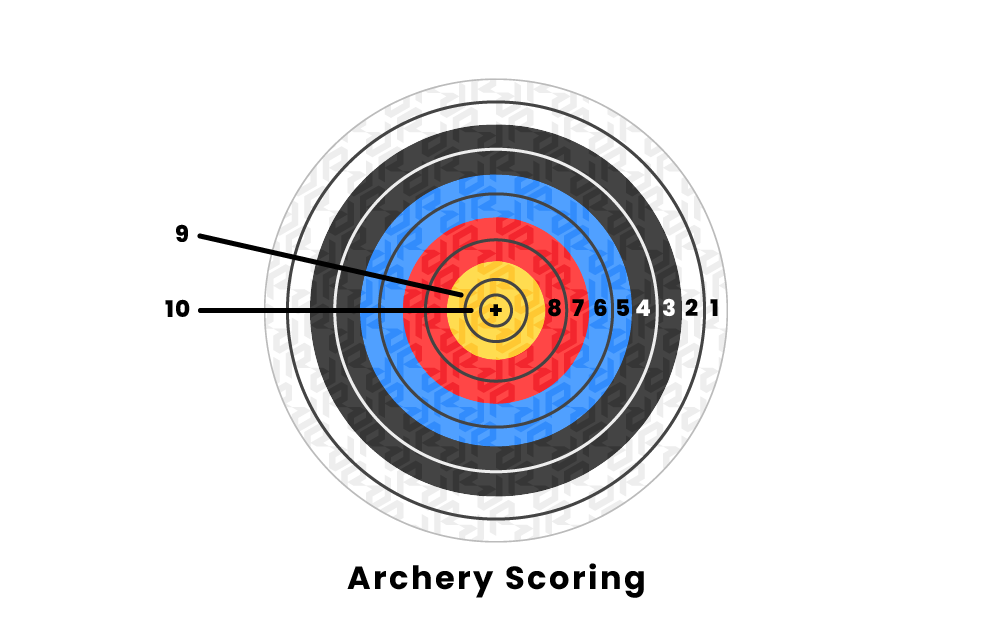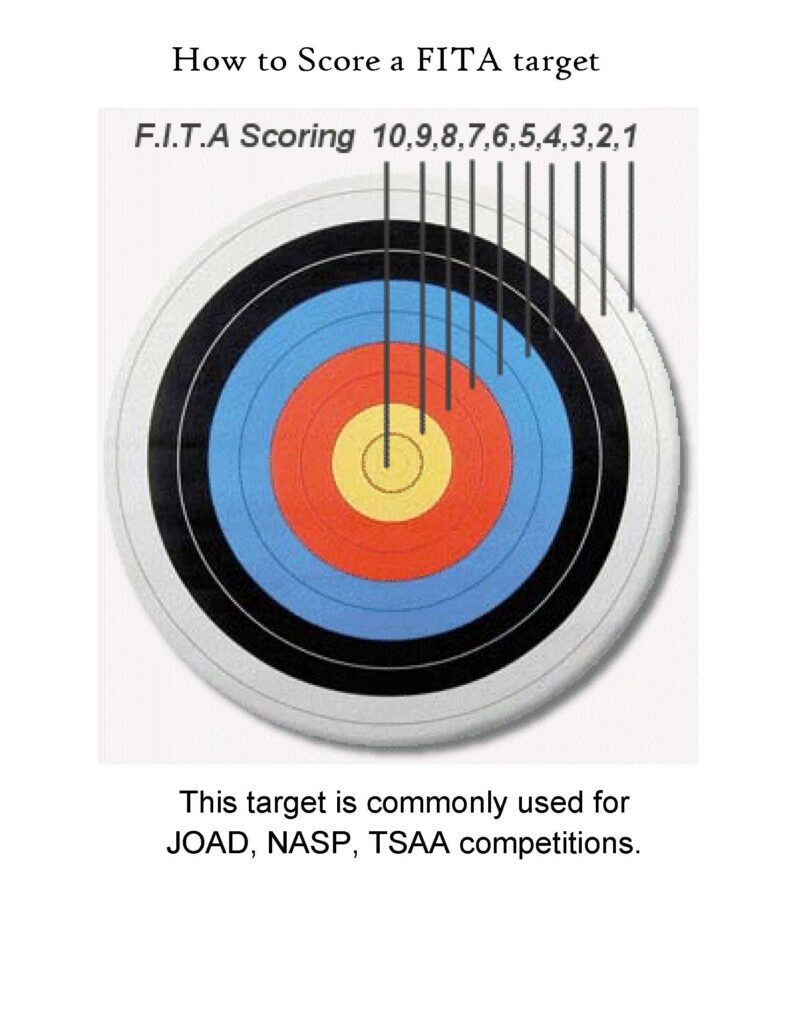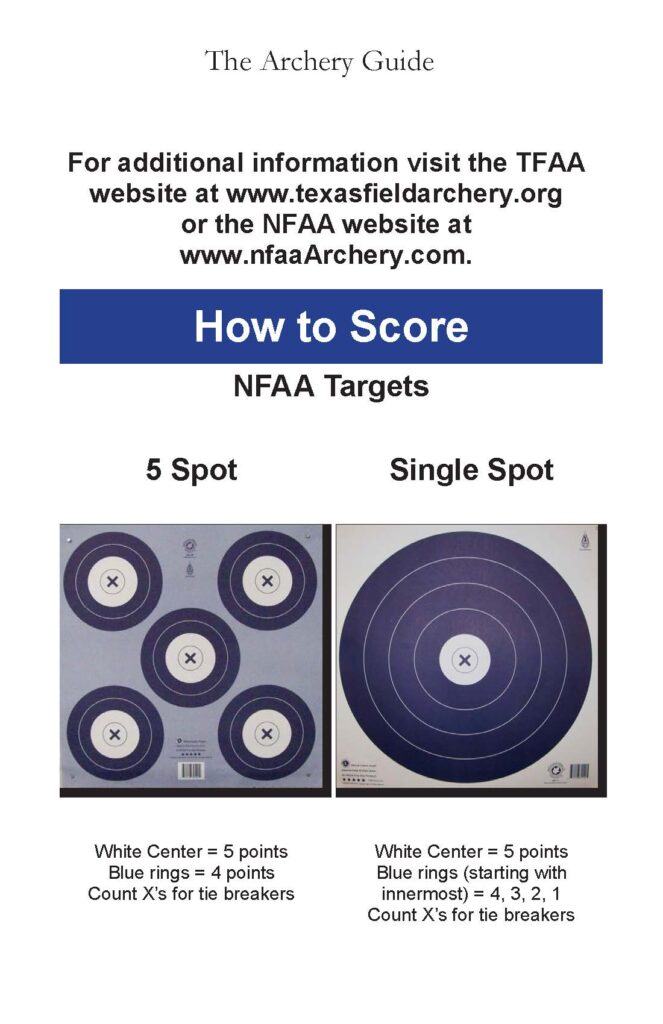
Are you curious about how archery is scored in competition? The scoring system in archery competitions can be fascinating and complex. This article will provide you with a clear and concise overview of how archery scores are calculated, taking you through the key elements involved in determining a competitor’s final score. From the intricacies of scoring zones on the target to the various rounds and rules followed in competitive archery, this article will equip you with the knowledge to better appreciate and understand the scoring process in this ancient and captivating sport. So, if you’ve ever wondered how archers earn their points in competition, keep reading to uncover the secrets of archery scoring!
Scoring System in Archery Competitions
Archery competitions involve a scoring system to determine the performance and ranking of the participating archers. There are different scoring systems used for various types of archery, such as traditional, Olympic, and compound archery. Each scoring system has its own set of rules, regulations, and scoring methods. In this article, we will explore the scoring systems in traditional archery, Olympic archery, and compound archery, as well as the target face design and scoring zones. We will also delve into the scoring method, rules and regulations, judges and officials’ roles, and factors affecting scoring. Lastly, we will discuss the importance of training and preparation for scoring in archery competitions.
Traditional Archery Scoring
Target Face and Scoring Zones
Traditional archery scoring involves a unique target face design to assess the accuracy and precision of the archers’ shots. The target face is circular and consists of concentric rings of varying colors. The center, often referred to as the bullseye, carries the highest score, while the outer rings reduce in value progressively. Each ring is assigned a specific score, with the highest score typically placed in the center of the target.
Scoring Method
In traditional archery, the scoring method is based on the value assigned to the arrows based on where they hit the target face. The arrow that lands closest to the center receives the highest score, while arrows hitting outer rings receive lower scores. The score is determined by the ring that the arrow hits, with higher scores given to arrows hitting closer to the center. Each arrow’s score is then recorded individually, and the cumulative score is calculated based on the total score earned by the archer throughout the competition.
Scoring Rules and Regulations
Traditional archery competitions have specific rules and regulations dictating the scoring process. These rules ensure fairness and consistency across all participants. The rules may include guidelines on arrow placement, scoring zone boundaries, and the use of specific equipment. Additionally, there may be rules regarding the number of ends (rounds of arrows), the number of arrows per end, and time limits for shooting. These regulations aim to maintain a level playing field and standardize the scoring process for all participants.

Olympic Archery Scoring
Target Face and Scoring Zones
Olympic archery uses a target face design that differs slightly from traditional archery. The target face consists of ten concentric rings, numbered from one to ten, with the highest score assigned to the innermost ring. The colors of the rings alternate between white and gold, creating visual contrast and aiding in score determination.
Scoring Method
The scoring method in Olympic archery relies on similar principles to traditional archery. Each arrow’s score is determined by the ring it hits on the target face. The closer the arrow lands to the center, the higher the score it receives. The arrow scoring corresponds directly to the number assigned to the ring. For example, if an arrow lands in the outermost ring, it is assigned a score of one, while an arrow hitting the innermost ring receives a score of ten. The individual arrow scores are recorded, and the cumulative score is calculated to evaluate the archers’ performance.
Scoring Rules and Regulations
Olympic archery competitions strictly adhere to specific scoring rules and regulations set by governing bodies. These regulations define the parameters within which archers must operate. The rules may dictate the scoring zone boundaries, restrict certain types of equipment, and outline the process for calculating the cumulative score. There may also be rules regarding aspects such as the number of ends, the number of arrows per end, and time limits for shooting. These rules ensure a uniform scoring system and maintain the integrity of the competition.
Compound Archery Scoring
Target Face and Scoring Zones
Compound archery employs a similar target face design to Olympic archery, consisting of ten concentric rings. However, compound archery target faces often have a smaller diameter than the target faces used in Olympic or traditional archery. The rings are numbered and colored to indicate the corresponding scores, with the highest score being allocated to the center.
Scoring Method
The scoring method in compound archery follows the same principles as traditional and Olympic archery. The arrows’ scores are determined by the ring they hit on the target face, with higher scores awarded for arrows landing closer to the center. Each arrow’s score is noted individually, and the cumulative score is calculated by summing up the total score of all arrows shot by the archer.
Scoring Rules and Regulations
Compound archery competitions have specific scoring rules and regulations that govern the entire scoring process. These regulations may cover aspects such as arrow placement, scoring zone boundaries, and the use of specific equipment. There may also be rules dictating the number of ends, the number of arrows per end, and time limits for shooting. By following these rules, the competitions ensure fairness, consistency, and standardization in scoring.

Target Face and Scoring Zones
Target Face Design
The target face design plays a crucial role in archery scoring. It provides the archers with a visual reference to aim at and enables the judges to determine the score accurately. The circular shape of the target face allows for equal scoring opportunities for all archers. Additionally, the contrasting colors and distinct rings aid in determining the score based on where the arrow lands.
Scoring Zones
The target face is divided into scoring zones or rings, each carrying a designated score. In traditional, Olympic, and compound archery, the scoring zones are based on the distance from the center. The closer the arrow lands to the center, the higher the score it receives. The number or color assigned to each ring represents its value, ensuring clarity and consistency in scoring across different archery competitions.
Scoring Method
Arrow Value
In archery competitions, each arrow shot carries a particular value based on where it hits the target face. The arrows that land closer to the center of the target face carry higher scores, while arrows that hit the outer rings receive lower scores. The value assigned to each arrow is determined by the specific scoring zones or rings set by the competition rules.
Arrow Placement
The scoring method considers the precise placement of the arrows on the target face. The judges or officials carefully analyze the position of the arrow to determine the corresponding score. The distance from the center and the ring the arrow hits determine the score assigned to that arrow. Accurate arrow placement is crucial for accurate scoring and fair assessment of the archers’ performance.
Cumulative Score Calculation
In archery competitions, the cumulative score is calculated by adding up the individual scores of all arrows shot by an archer. The cumulative score reflects the archer’s overall performance throughout the competition. Based on this score, archers are ranked and awarded accordingly. The cumulative score calculation ensures that each arrow contributes to the final result, emphasizing consistency and accuracy in performance.

Scoring Rules and Regulations
Number of Ends
The number of ends refers to the rounds of arrows shot during a competition. Scoring rules and regulations specify the predetermined number of ends archers must complete. The number of ends may vary depending on the level of the competition, ranging from a few ends in casual events to multiple ends in professional tournaments. The designated number of ends allows for fair and standardized scoring across all participants.
Number of Arrows per End
Archery competitions also define the number of arrows participants shoot per end. An end consists of all archers shooting their arrows, usually taking turns, before retrieving them. The rules determine the specific number of arrows an archer shoots per end, with multiple archers typically shooting the same number of arrows. The predetermined number of arrows per end ensures consistent scoring and effective time management during the competition.
Time Limits
Scoring rules and regulations often include time limits for shooting the specified number of arrows per end. The time limits may vary based on the level and type of competition, allowing sufficient time for archers to aim, shoot, and retrieve their arrows. Strict adherence to the time limits ensures a smooth flow of the competition and prevents unnecessary delays.
Tie-Breaking Rules
In the event of a tie in the cumulative score between two or more archers, tie-breaking rules come into play to determine the winner. These rules are designed to establish a fair method of breaking the tie and determining a clear winner. Tie-breaking rules may include additional rounds of arrows or specific target face challenges to eliminate the tie and determine the final ranking.
Judges and Officials
Roles and Responsibilities
Judges and officials are integral to the scoring process in archery competitions. Their primary role is to ensure adherence to the scoring rules and regulations and maintain the integrity of the competition. Judges monitor the shooting process, analyze arrow placements, and determine the corresponding scores based on the rules. They also enforce the time limits and ensure fair play among the participants.
Scoring Verification
To maintain accuracy and fairness, scoring verification is an essential aspect of the judges’ responsibilities. The judges cross-check and verify the scores of each arrow shot by the archers. This verification process ensures that no errors or discrepancies are present in the final cumulative score. Scoring verification is crucial in preventing any biases or inaccuracies in the scoring outcome.
Protests and Appeals
In situations where archers or teams disagree with the judges’ decisions or the scoring outcome, the official scoring process allows for protests and appeals. Archers or team representatives can seek clarification or challenge specific score determinations through the designated protest and appeals procedures. This ensures that everyone has the opportunity to voice concerns or objections and seek a fair resolution.

Factors Affecting Scoring
Wind and Weather Conditions
Scoring in archery competitions can be significantly affected by environmental factors such as wind and weather conditions. Strong or gusty winds can cause the arrows to deviate from their intended path, leading to lower scores. Similarly, adverse weather conditions like rain or extreme heat can impact the archers’ focus and execution, affecting their overall performance. Archers must adapt and make necessary adjustments to compensate for these external factors when scoring.
Equipment Performance
The performance of archery equipment, including bows, arrows, and accessories, can have a direct impact on scoring. If the equipment is not properly tuned, calibrated, or maintained, it can hinder the archer’s ability to achieve accurate shots consistently, resulting in lower scores. Regular equipment maintenance, inspection, and adjustments are crucial to ensure optimal performance and maximize scoring potential.
Archers’ Skill and Execution
The skill level and execution of archers significantly influence their scoring in competitions. Proper form, technique, and consistency are vital for accurate and precise shots. Archers who have honed their skills through practice and training are more likely to achieve higher scores. Concentration, focus, and mental preparedness also play crucial roles in executing shots accurately and achieving desirable scores.
Mental Focus and Concentration
The mental state of the archers, including their focus, concentration, and ability to manage pressure, can affect their scoring. Competition environments can induce stress and distractions, impacting the archers’ mental focus during shooting. Strong mental preparation, visualization techniques, and mindfulness practices can help archers maintain their mental composure, thereby contributing to improved scoring outcomes.
Training and Preparation for Scoring
Target Practice
Training for scoring in archery competitions involves regular target practice. Archers focus on improving their accuracy, precision, and consistency by repeatedly shooting at specified target faces. By practicing under simulated competition conditions, archers can fine-tune their skills, adjust for various factors, and develop muscle memory. Target practice is an essential component of training to enhance scoring abilities.
Physical Stamina and Fitness
Physical stamina and fitness are also crucial for scoring in archery competitions. Archers need to maintain proper posture, muscle strength, and endurance throughout the competition, as fatigue can lead to decreased accuracy and scoring potential. Regular exercise, strength training, and conditioning help archers build the physical capacity necessary for consistent and accurate shooting.
Mental Preparation and Visualization
Effective mental preparation is key to achieving desirable scoring results in archery competitions. Archers engage in visualization techniques, mentally rehearsing their shot sequences, focusing on the target, and envisioning successful outcomes. This mental preparation enhances focus, concentration, and confidence, contributing to improved scoring.
Competition Strategy
Developing a competition strategy is integral to maximize scoring potential. Archers analyze the rules, regulations, and scoring systems specific to the competition and adapt their strategies accordingly. This may involve assessing the impact of external factors, planning shot sequences, and identifying optimal scoring opportunities. A well-defined competition strategy allows archers to make informed decisions and optimize their scoring performance.
In conclusion, archery scoring systems in competitions vary depending on the type of archery, such as traditional, Olympic, or compound archery. Each system has its own target face design, scoring zones, and rules and regulations. Scoring involves assessing the value and placement of the arrows, followed by the cumulative score calculation. Judges and officials play a crucial role in ensuring fair play and accurate scoring. Various factors, including wind conditions, equipment performance, and archers’ skill and mental focus, can influence scoring outcomes. Proper training, preparation, and competition strategy are essential for archers to enhance their scoring abilities and achieve success in archery competitions.
